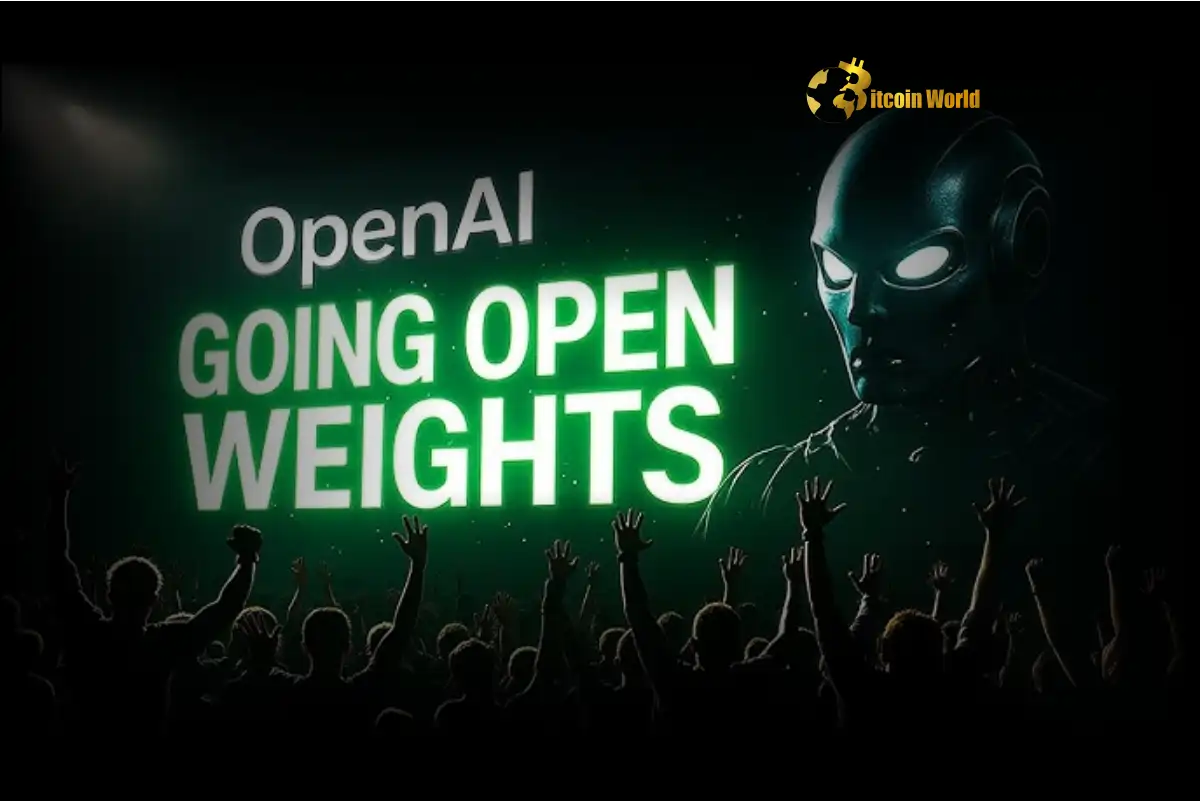OpenAI Open Model: A Game-Changing Push in AI Competition
0
0

For those tracking the cutting edge of technology and its potential impact on various sectors, including cryptocurrency and decentralized systems, developments in artificial intelligence are always noteworthy. OpenAI, a major player in the AI landscape, is making a significant move that could reshape the field, particularly concerning Open Source AI approaches.
What is the Upcoming OpenAI Open Model?
Toward the end of March, OpenAI revealed its intention to release its first ‘open’ language model since the GPT-2 era sometime this year. Recent insights from company interactions with developers indicate that this initiative is progressing. Aidan Clark, OpenAI’s VP of research, is reportedly leading the early-stage development of this new model. The target release window is currently set for early summer.
This forthcoming OpenAI Open Model is designed as a reasoning model, similar to OpenAI’s existing ‘o-series’ models. The ambitious goal is for it to set new performance standards, aiming to be benchmark-topping among other open reasoning models available today.
Why is OpenAI Shifting Towards Open Source AI?
OpenAI’s pivot back towards an open strategy appears to be influenced by several factors. The company faces increasing pressure from rivals who have embraced an open approach, such as China’s DeepSeek and Meta with its Llama family of AI Models. These competitors have demonstrated the success of making models accessible to the AI community for experimentation and commercial use.
Meta’s Llama models, for instance, have seen over 1 billion downloads, highlighting the strong demand and community engagement fostered by open releases. This success by competitors underscores the strategic advantage that an open approach can provide in rapidly building a user base and driving innovation.
Internally, there have also been signals regarding a potential shift. OpenAI CEO Sam Altman has previously commented on the company potentially being ‘on the wrong side of history’ regarding open-sourcing its technologies, suggesting a desire to explore different strategies moving forward.
Exploring the Design and Features of These New AI Models
Sources indicate that the upcoming OpenAI Open Model is planned to function as a ‘text in, text out’ system. A key design consideration is its intended compatibility with high-end consumer hardware, which could significantly broaden accessibility for developers and researchers.
Furthermore, the model may incorporate features seen in recent models from other labs, such as Anthropic. This includes the potential for developers to toggle its ‘reasoning’ capabilities on or off. While reasoning can enhance accuracy, it typically increases processing latency, offering developers flexibility based on their specific needs.
Should this initial open model launch prove successful, OpenAI may follow up with additional releases, potentially including smaller, more specialized AI Models.
Navigating the Generative AI Competition Landscape
The landscape of Generative AI is intensely competitive. OpenAI’s move into the open domain is a direct response to this environment. A crucial aspect of their strategy for this new model involves exploring a highly permissive license.
This approach aims to avoid the criticisms leveled against some existing open models, like Llama and Google’s Gemma, which have been seen by some as imposing restrictive usage or commercial terms. By offering a more permissive license, OpenAI seems to be actively trying to foster broader adoption and developer goodwill.
Safety and evaluation remain a priority. OpenAI intends to conduct thorough red-teaming and evaluations using its preparedness framework, similar to its other models. A detailed model card is also planned for release, providing transparency on benchmarking and safety testing results. This is particularly important given that open models can be modified post-release.
The Stakes: AI Competition Heats Up
This strategic shift by OpenAI highlights the escalating AI Competition. By releasing an open model, OpenAI is directly challenging rivals on their home turf. The aim is not just to release an open model, but to release one that is ‘benchmark-topping’ among its peers, signaling a clear intent to lead even in the open ecosystem.
This move has significant implications for the broader AI community. It could accelerate innovation, provide developers with powerful new tools, and potentially influence the direction of Open Source AI development globally. As major players like OpenAI engage more directly in the open space, the pace of advancement across Generative AI is likely to quicken, presenting both opportunities and challenges for the entire tech ecosystem.
OpenAI’s planned release of a powerful, openly licensed reasoning model marks a notable change in strategy, directly addressing competitive pressures and past criticisms. If successful, this OpenAI Open Model could significantly impact the trajectory of Open Source AI and intensify the already heated AI Competition, offering developers powerful new AI Models and potentially accelerating the evolution of Generative AI technologies.
To learn more about the latest AI models, explore our article on key developments shaping AI competition features.
0
0
 Manage all your crypto, NFT and DeFi from one place
Manage all your crypto, NFT and DeFi from one placeSecurely connect the portfolio you’re using to start.






